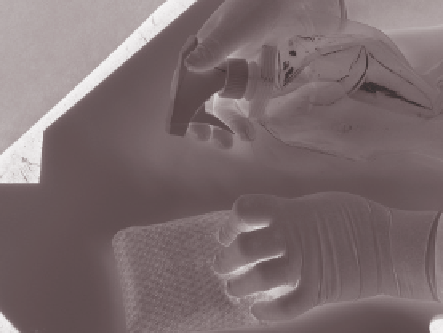Agriculture Reference
In-Depth Information
Table 14.2.
Inactivation of spores of
B. stearothermophilus
(BS) and
B. atrophaeus
(BA) and
vegetative pathogens by different ClO
2
treatments with the Portable Chemical Sterilizer (PCS)
ClO
2
Treatment
Time (Min)
BS Indicator
BA Indicator
Listeria
a
(10
5
)
E.coli
b
(10
6
)
I
30
neg.
neg.
II
30
neg.
neg.
neg.
III
30
neg.
neg.
neg.
III
60
neg.
neg.
neg.
a
25 g tomato wedges inoculated with
Listeria monocytogenes
OSY - 8578.
b
25 g tomato wedges inoculated with
Escherichia coli
ATCC 11229.
(a)
(b)
Figure 14.6.
The D-FENS sprayer (left) generates aqueous ClO
2
at point-of-use and
easily sprays ClO
2
on food contact surfaces and wipes away harmful pathogens. D-FENS
has the potential to sanitize U.S. Army fi eld kitchens and protect soldier health from
secondary contamination.
tissue of the sliced apple resisted discoloration and remained white for at least a week
after the chlorine dioxide treatment, despite exposure to ambient air. Clearly, chlorine
dioxide treatments in the PCS are effi cacious in eliminating pathogenic cells, bacterial
spores, and the polyphenoloxidase enzyme that causes enzymatic browning in cut
apple tissue.
D-FENS
Another invention derived from this unique chemical combination is a novel process
for conveniently generating aqueous chlorine dioxide solutions at point-of-use in a
collapsible handheld bottle equipped with a spray-trigger device and called D-FENS
(
D
isinfectant - sprayer for
F
oods and
EN
vironmentally - friendly
S
anitization, see Fig.
14.6). D-FENS was designed to exploit chlorine dioxide's ability to eliminate vegeta-
tive pathogens, viruses, resistant bacterial spores, and biofi lms on surfaces and meet








